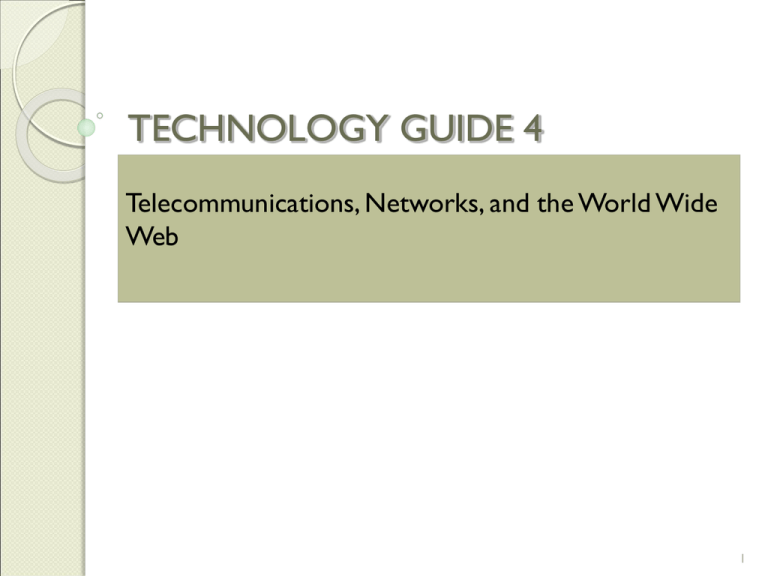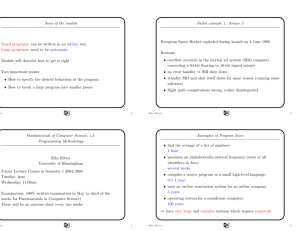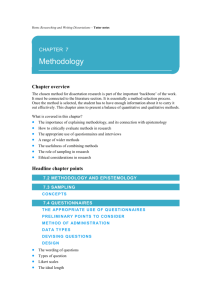
TECHNOLOGY GUIDE 4
Telecommunications, Networks, and the World Wide
Web
1
Technology Guide Overview
2
Agenda
TG4.1 The Telecommunications System
TG4.1.1 Definition and concepts
TG4.1.2 Communications processors
TG4.1.3 Communications media and channels
TG4.1.4 Transmission
TG4.2 Types of Networks
TG4.2.1 Local Area Networks
TG4.2.2 Wide Area Networks
TG4.2.3 Enterprise networking
3
TG4.3 Network Fundamentals
TG 4.3.1 Networks
TG 4.3.2 Types of Network Processing
TG4.3.3 Client/Server computing
TG4.3.4 Peer-to-Peer processing
TG4.4 The Internet
TG4.4.1 Accessing the Internet
TG4.4.2 The future of the Internet
TG4.5 The World Wide Web
4
LEARNING OBJECTIVES
1.
2.
3.
4.
5.
Understand the basics of telecommunications systems
including the main types of wired communications media and
transmission technologies.TG4.1
Differentiate between local area network and wide area
network. TG4.2
Describe the main network protocols and processing. TG4.3
Explain how the Internet works and how it can be accessed.
TG4.4
Differentiate between the Internet and the World Wide Web.
TG4.5
5
TG4.1 The Telecommunications System
TG4.1.1 Definition and concepts
TG4.1.2 Communications processors
TG4.1.3 Communications media and channels
TG4.1.4 Transmission
6
TG4.1.1 Definition and concepts
A telecommunications system consists of hardware
and software that transmit information from one
location to another. These systems can transmit text,
data, graphics, voice, documents, or full-motion video
information. They transmit this information with two
basic types of signals: analog and digital.
7
Analog signals are continuous waves that transmit
information by altering the characteristics of the waves.
Analog signals have two parameters: amplitude and
frequency.
Digital signals are discrete pulses that are either on
or off, representing a series of bits (0s and 1s). This
quality allows them to convey information in a binary
form that can be clearly interpreted by computers.
8
9
TG4.1.2 Communications processors
Communications processors are hardware devices that
support data transmission and reception across a
telecommunications system. These devices include
◦ Modems
◦ Multiplexers
◦ Front-end processors
10
Modems
The function of a modem is to convert digital signals to analog
signals, a process called modulation, and analog signals to digital
signals, a process called demodulation. Modems are used in pairs.
The modem at the sending end converts a computer’s digital
information into analog signals for transmission over analog lines
(for example, telephone lines).
At the receiving end, another modem converts the analog signal
back into digital signals for the receiving computer.
11
There are three types of modems: dial-up modems, DSL modems,
and cable modems.
Dial-up modems have transmission speeds of up to 56 Kbps.
Cable modems are modems that operate over coaxial cable (for
example, cable TV). They offer high-speed access to the Internet or
corporate intranets.
DSL (digital subscriber line) modems operate on the same lines as
voice telephones and dial-up modems, but DSL signals do not
interfere with voice service. Also, DSL modems always maintain a
connection, so an Internet connection is immediately available.
12
Multiplexer and front-end processor
A multiplexer is an electronic device that allows a single
communications channel to carry data transmissions
simultaneously from many sources.
A front-end processor is a specialized computer
manages all routing communications with peripheral
devices.
13
TG4.1.3 Communications media and
channels
For data to be communicated from one location to
another, some form of pathway or medium must be
used. These pathways are called communications
channels.
The communications channels are divided into two
types of media: cable (twisted-pair wire, coaxial cable,
and fibre optic cable) and broadcast (microwave,
satellite, radio, and infrared).
14
15
TG4.1.4 Transmission
Transmission speed
Bandwidth refers to the range of frequencies available in
any communications channel.
Narrowband channels typically provide low-speed
transmission speeds up to 64 Kbps, although some now
reach speeds of up to 2 Mbps.
Broadband channels provide high-speed transmission
rates ranging from 256 Kbps up to several terabits per
second.
16
Transmission technologies
Integrated services digital network (ISDN)
Digital subscriber lines (DSL)
Asynchronous transfer mode (ATM)
Synchronous optical network (SONET)
T-Carrier system
17
Integrated services digital network (ISDN) is an older
international telephone standard for network access
that uses existing telephone lines and allows users to
transfer voice, video, image, and data simultaneously.
Digital subscriber lines (DSL) provide high-speed, digital
data transmission from homes and businesses over
existing telephone lines. Because the existing lines are
analog and the transmission is digital, you need DSL
modems.
18
Asynchronous transfer mode (ATM) networks allow for almost
unlimited bandwidth on demand. ATM currently requires fibre-optic
cable, but it can transmit up to 2.5 gigabits per second. On the
downside, ATM is more expensive than ISDN and DSL.
Synchronous optical network (SONET) is an interface standard for
transporting digital signals over fibre optic lines that allows users to
integrate transmissions from multiple vendors.
The T-carrier system is a digital transmission system that defines
circuits that operate at different rates, all of which are multiples of
the basic 64 Kbps used to transport a single voice call.
19
TG4.2 Types of Networks
TG4.2.1 Local Area Networks
TG4.2.2 Wide Area Networks
TG4.2.3 Enterprise networking
20
TG4.2.1 Local Area Networks
A local area network (LAN) connects two or more
devices in a limited geographical region, usually within
the same building, so that every device on the network
can communicate with every other device.
21
TG4.2.2 Wide Area Networks
When businesses have to transmit and receive data
beyond the confines of the LAN, they use wide area
networks. Wide area networks (WANs) are networks
that cover large geographic areas. WANs typically
connect multiple LANs.
One important type of WAN is the value-added
network (VAN).VANs are private, data-only networks
managed by outside third parties that provide
telecommunication and computing services to multiple
organizations. Many companies use VANs to avoid the
expenses of creating and managing their own networks.
22
TG4.2.3 Enterprise networking
Organizations today have multiple LANs and may have
multiple WANs, which are interconnected to form an
enterprise network.
23
TG4.3 Network Fundamentals
Network protocols is a set of rules and procedures that
govern transmission across a network is a protocol.
Ethernet
TCP/IP
24
The transmission control protocol/Internet protocol (TCP/IP) is
the protocol of the Internet. TCP/ IP uses a suite of protocols, the
main ones being the transmission control protocol (TCP) and the
Internet protocol (IP).
The TCP performs three basic functions:
It manages the movement of packets (discussed next) between
computers by establishing a connection between the computers,
It sequences the transfer of packets, and
It acknowledges the packets that have been transmitted.The
Internet protocol (IP) is responsible for disassembling, delivering,
and reassembling the data during transmission, a process we
discuss next.
1.
2.
3.
25
TG4.3.2 Types of Network Processing
TG4.3.2 Client/Server computing
TG4.3.3 Peer-to-Peer processing
26
TG4.3.3 Client/Server computing
Client/server computing links two or more computers in an
arrangement in which some machines (called servers) provide
computing services for user PCs (called clients).
Usually, an organization does the bulk of its processing or
application/data storage on suitably powerful servers that can be
accessed by less powerful client machines.
The client requests applications, data, or processing from the
server, which acts on these requests by “serving” the desired
commodity.
27
TG4.3.3 Peer-to-Peer processing
Peer-to-peer (P2P) processing is a type of client/server
distributed processing in which each computer acts as
both a client and a server. Each computer can access (as
assigned for security or integrity purposes) all files on
all other computers.
28
There are three basic types of peer-to-peer processing.
The first accesses unused CPU power among
networked computers. One example is SETI@home
The second form of peer-to-peer is real-time, personto-person collaboration, such as Google Talk.
The third peer-to-peer category is advanced search and
file sharing. One example of this is BitTorrent.
29
30
TG4.4 The Internet
The Internet (“the net”) is a global WAN that connects
approximately one million organizational computer
networks in more than 200 countries on all continents,
including Antarctica, and features in the daily routine of
almost 2 billion people. Participating computer systems,
called nodes, include smart phones, PCs, LANs,
databases, and mainframes.
31
An intranet is a network designed to serve the
internal informational needs of a single organization.
An extranet connects parts of the intranets of
different organizations and allows secure
communications among business partners over the
Internet using virtual private networks.
Darknets are private networks that run on the
Internet but are open only to users who belong to the
network. Typically, relatively few people or organizations
have access to a darknet, due to security concerns.
32
TG4.4.1 Accessing the Internet
Connecting via LAN
Connecting via an on-line service
Connecting via other means
33
Connecting via an on-line service
You can access the Internet by opening an account with
an Internet service provider. An Internet service
provider (ISP) is a company that offers Internet
connections for a fee.
ISPs connect to one another through network access
points (NAPs). NAPs are exchange points for Internet
traffic. They determine how traffic is routed. NAPs are
key components of the Internet backbone.
34
35
TG4.4.2 The future of the Internet
In Canada, CANARIE develops and deploys advanced network
applications essential for national and international collaboration,
such as remote medical diagnosis, digital libraries, distance
education, on-line simulation, and virtual laboratories.
Internet2 is the equivalent of CANARIE in the United States and is
designed to be fast, always on, everywhere, natural, intelligent, easy,
and trusted. It allows the deployment of advanced applications such
as remote medical diagnosis, digital libraries, distance education, online simulation, and virtual laboratories. Internet2 is not a separate
physical network from the Internet.
36
TG4.5 The World Wide Web
The World Wide Web (the Web, WWW, or W3) is a system of
universally accepted standards for storing, retrieving, formatting,
and displaying information via a client/server architecture.
The Web handles all types of digital information, including text,
hypermedia, graphics, and sound. It uses graphical user interfaces, so
it is very easy to navigate.
To access a website, the user must specify a uniform resource
locator (URL), which points to the address of a specific resource
on the Web.
37
Copyright
Copyright © 2011 John Wiley & Sons Canada, Ltd. All rights reserved.
Reproduction or translation of this work beyond that permitted by
Access Copyright (the Canadian copyright licensing agency) is unlawful.
Requests for further information should be addressed to the
Permissions Department, John Wiley & Sons Canada, Ltd. The purchaser
may make back-up copies for his or her own use only and not for
distribution or resale. The author and the publisher assume no
responsibility for errors, omissions, or damages caused by the use of
these files or programs or from the use of the information contained
herein.
38






